Dambulla Cave Temple Sri Lanka: Complete UNESCO Site Guide 2025
- Kate Colliety

- Jul 21
- 6 min read
Updated: Aug 14
Located in Sri Lanka’s cultural triangle is the Dambulla Cave temple and Golden Temple. A place of deep spiritual history that attracts visitors who seek to learn more about the Buddhist past and marvel at the carefully carved caves.
Located close to Sigiriya and the famous Lion’s Rock, Dambulla makes a great second stop, and is often included in tours of the area.
The Dambulla caves in Sri Lanka have been designated with UNESCO World Heritage Site status and boast 5 caves adorned with ancient Buddhist murals and over 150 statues. The caves date back to around 100 BC and give a glimpse into the past.
Below we share a travellers guide to the Dambulla Cave Temples, including our experience, entrance fees, what to expect and the history behind the temple.
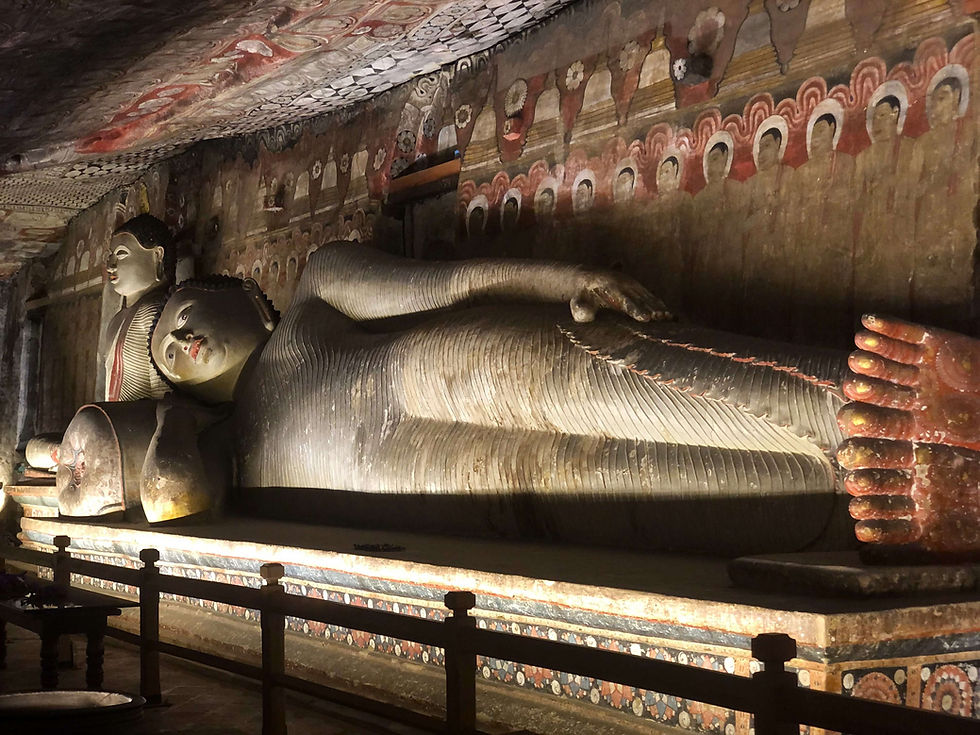
Where Is The Dambulla Cave Temple?
The Dambulla Cave Temple sits atop a 160-meter high rock outcrop in central Sri Lanka and is part of the cultural triangle. Many people pass by Dambulla when visiting Sigiriya, which is nearby.

How To Get To Dambulla?
Via Bus
There is a main bus hub in Dambulla that connects the cities of Colombo (4-5 hours), Kandy (2 hours) and Sigiriya (20 Minutes). From the bus station the Cave Temple is a 20-minute walk or a short tuktuk taxi ride.
Via Hire Car Or Tuktuk
If you’re driving yourself there is a large car park near the entrance of the caves, which when we visited was free. On Google Maps this is called Dambulla Cave New Car Park.
From Sigiriya the drive takes 20-30 minutes.

Our Experience Of The Dambulla Cave Temple
Once parked, we secured our tuktuk’s rain covers in case of monkeys and headed towards the entrance. A short flight of stairs takes you to the ticket booth where you purchase your ticket for 2000 LKR per person.
From here there is one long staircase up to the Cave Temple, around 360 steps! The steps are partially shaded but we recommend avoiding the heat of the day as the climb is long and tiresome. Lining the steps are vendors selling the usual souvenirs, sarongs and sacred offerings. We politely dodged these and continued up.
At the top you are rewarded with a view over Dambulla town and the surrounding farmland. We took some time to enjoy the view exploring the gardens on the rock before handing our shoes in to visit the cave.
You need to cover your shoulders, knees and remove your shoes when entering the Dambulla Cave Temple. Your shoes are stored in a monkey secure rack with an attendant, which you are expected to tip, this is not really optional but 100-200 LKR will do. If you have forgotten long trousers or have your shoulders exposed you can hire a sarong at the ticket entrance at the top of the rock, this will cost around 100 LKR.

Guide To The Dambulla Royal Cave Temples & Dambulla Temple Complex
Once inside you have entered the Dambulla Royal Cave Temple. A UNESCO World Heritage Site that has been worshiped for over 2000 years. King Vattagamini Abhaya was forced into exile by Tamil invaders and found refuge in these granite rock overhangs for 14 years. After reclaiming his throne, he transformed them into temples in gratitude. Later kings including Nissankamalla, Senerat, and Kirti Sri Rajasinha added the elaborate murals and embellishments that visitors see today.
There are 5 caves to explore:
Cave 1
The first cave is Devalaya Viharaya, The Temple of the Gods, and houses a 14-meter long sleeping Buddha carved out of the rock. The walls are adorned in images of Vishnu and this was our favourite cave due to the enormity of the statue.
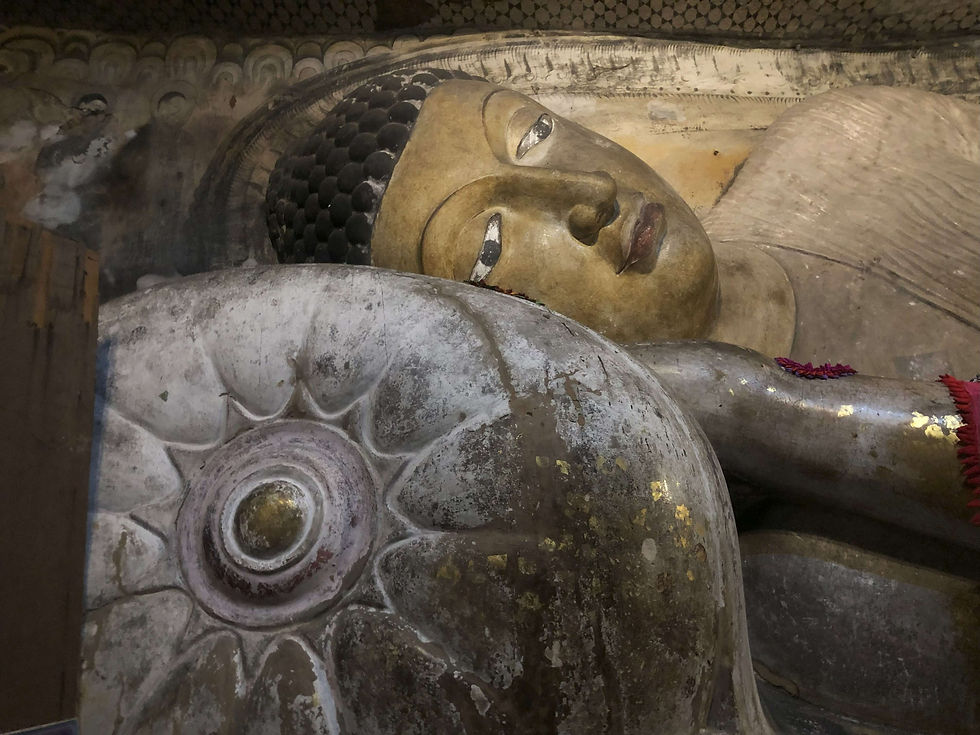
Cave 2
The second cave Maharaja Vihara, The Temple of the Great Kings, has statues of Vattagamini and Nissankalla, two kings who helped create the Cave Temple. This cave is large and also houses many Buddha statues.
Cave 3
The third cave is the Maha Aluth Viharaya, The Great New Temple and is full of sitting Buddhas. The walls also have ornate murals that date back to the 18th century.
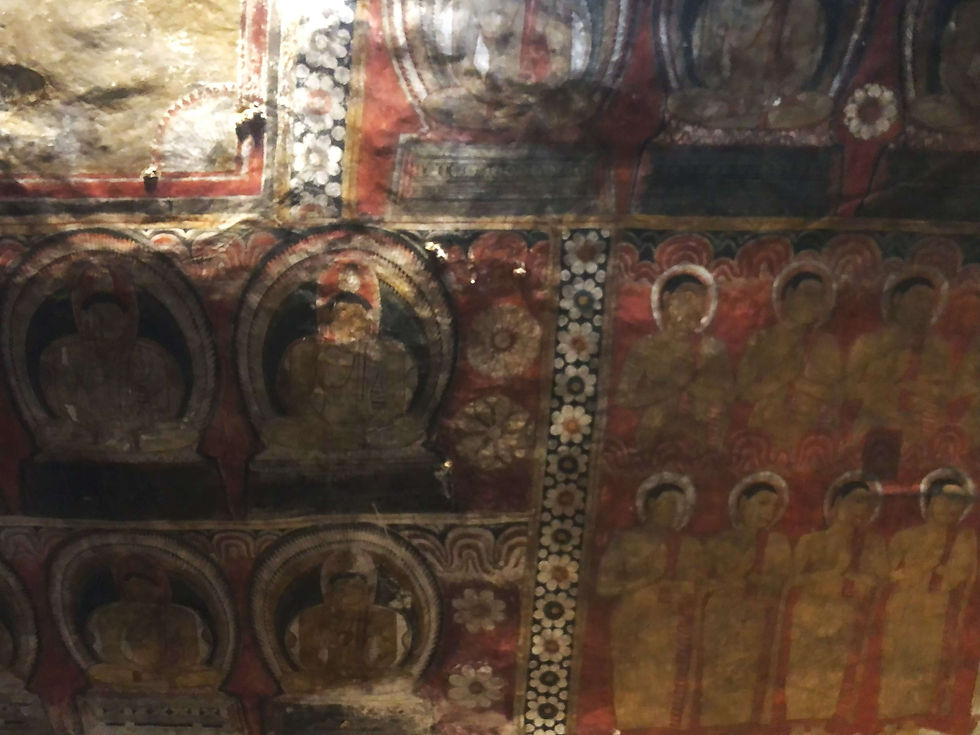
Cave 4
The Paccima Viharas, The Western Cave, is small but includes a central dagoba surrounded by Buddhas.
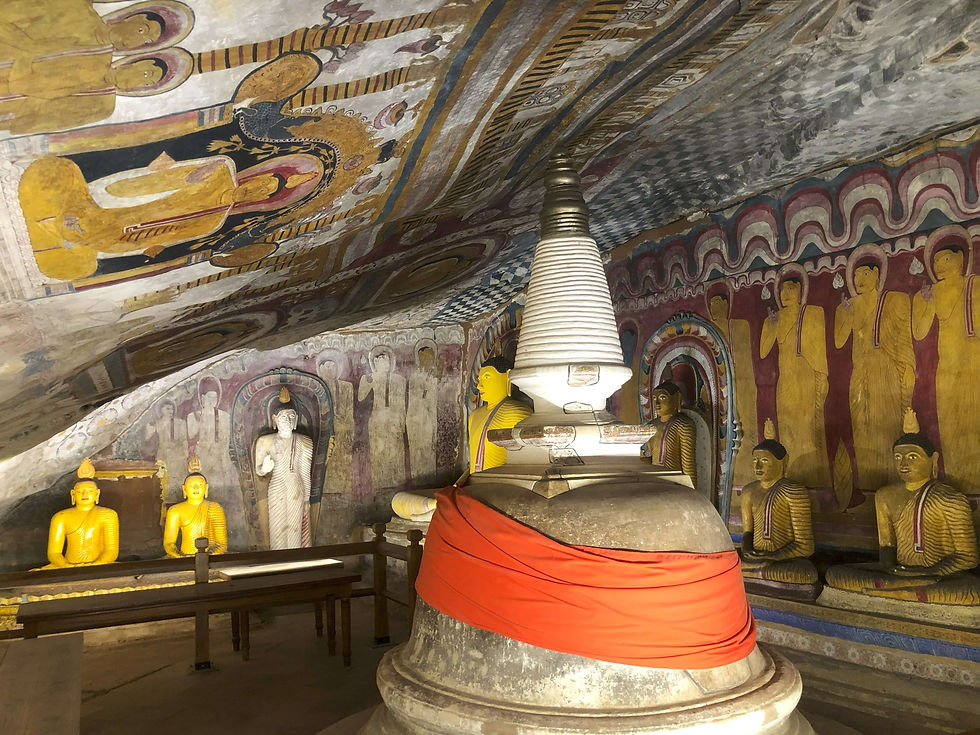
Cave 5
Devana Aluth Viharaya is the smallest and newest cave which features a 10-metre reclining buddha made with plaster and brick rather than stone.
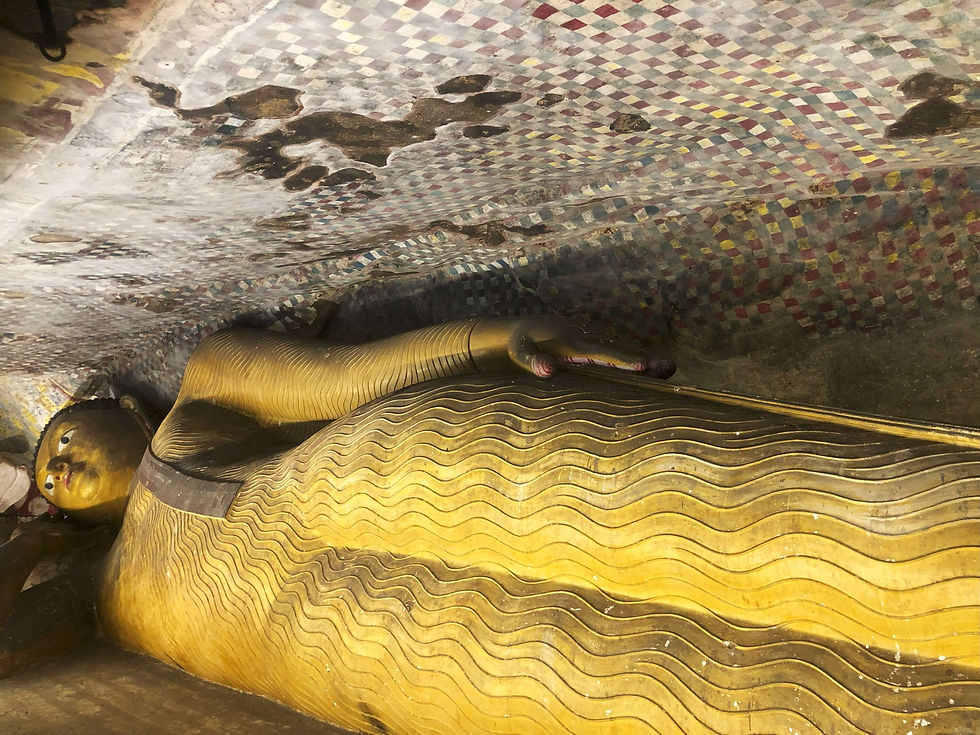
After we explored each cave we headed back down the long staircase to the carpark. We had chosen to wear flip flops and sliders, which with sweaty feet on a never ending steep staircase in hindsight wasn’t the best idea, Kate actually ended up walking down bare feet so we recommend trainers when visiting the Dambulla Cave Temple.
The whole visit took around 2 hours in total, making this the perfect activity to do at sunset leaving the morning free to climb Lion’s Rock or Pidurangala.
Golden Temple
The Golden Temple of Dambulla is another site you can visit separately from the Rock Temple. This is located near the main road. The Golden Temple is a large golden Buddha which is visible as you walk down from the Cave Temple. We didn’t end up visiting here, it was just too hot, but it makes a perfect stop after you’ve done the Cave Temple.
Tip: Don't mistake the Golden Temple entrance for the Cave Temple entrance. If you enter through the Golden Temple, you'll have to walk back down to the proper ticket booth and climb all those stairs again!
Dambulla Cave Temple Common Questions
How much is the Dambulla Cave Temple entrance fee?
Tickets cost 2000LKR
What are the Dambulla Cave opening hours?
The caves are open from 7am to 7pm with the ticket booth closing at 6pm.
How many steps up to the Dambulla Cave Temple?
There are around 360 steps up to the caves and the walk takes about 15 minutes.
What is the best time to visit the Dambulla Royal Cave Temple?
The best time to visit is in the early morning when the heat isn’t too strong. You can also visit around sunset which lights up the rock in a golden warmth plus it’s less busy!
Can I take photos in the Dambulla Cave Temple?
Yes, you can take photos but flash is prohibited as it can harm the artwork. Also remember you cannot take a photo with a person’s back to a Buddha Statue.
What to wear to the Dambulla Cave Temple?
You need to dress modestly and have your shoulders and knees covered. If you forget you can hire a sarong at the temple entrance at the top of the rock.
Best Dambulla Tours
Dambulla Travel Tips
Join your tour to Dambulla with your trip to Sigiriya. They are close by and both offer cultural attractions worth visiting on your trip to Sri Lanka
Hire a tuktuk! We found our tuktuk was the best way to get around, giving us freedom to see what we liked, when we liked!
Dambulla offers a more local experience, visit the Rose Quartz Mountains as well as the Dambulla Market for an authentic experience.
Final Thoughts About The Dambulla Royal Cave Temple
As Sri Lanka was our final stop of our 8-month backpacking trip we had become a little templed out, but the Dambulla Cave Temple is different, it’s intertwined with nature. The top of the rock gives sweeping views over the surrounding area and monkeys chatter above your head as you climb.
The caves themselves are a door into the past, out the bright sunshine and into a shaded room of rock transports you to a time of chisels, simplicity and faith. A perfect attraction while you’re staying in the nearby Sigiriya town.
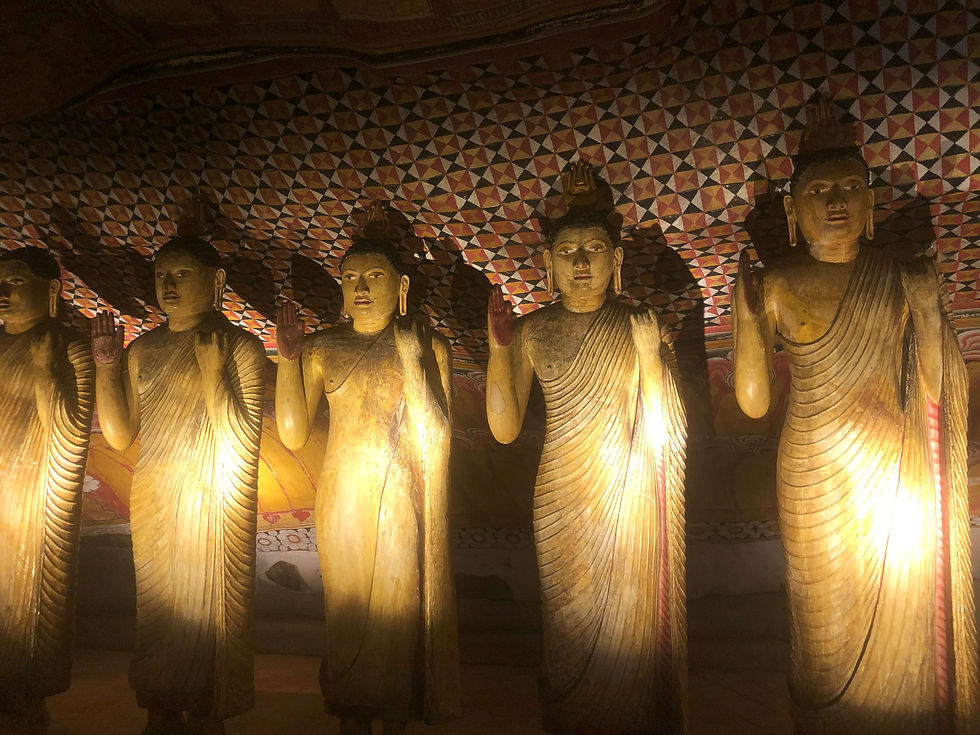
Travel Tools To Help You Plan
These are some of the travel tools we love and use daily, by booking through our links you support our blog and help us grow, thank you.
Thank you for reading and enjoy your Sri Lankan adventure. Reach out to us over on Instagram @KateandMikesTravels. We always love to hear from people who read our blogs!








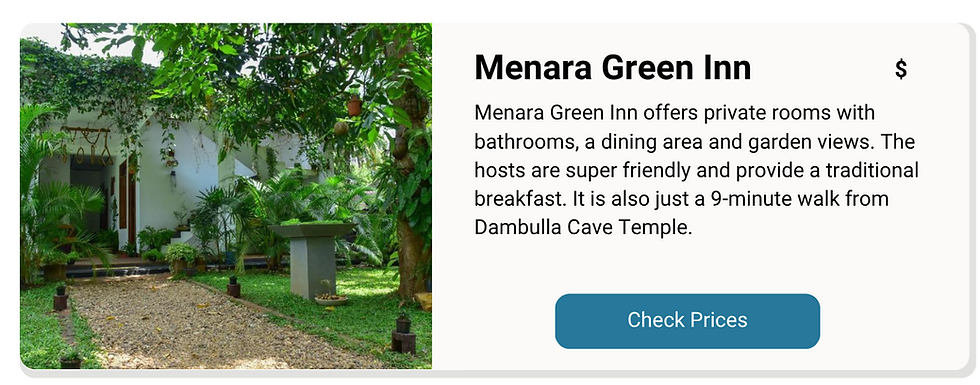
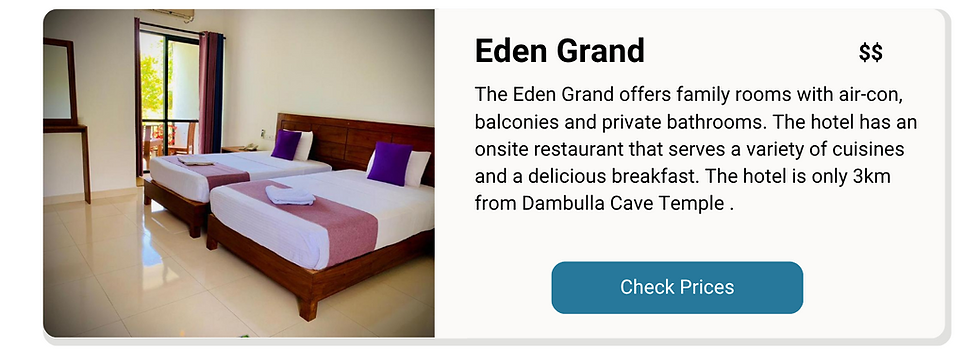
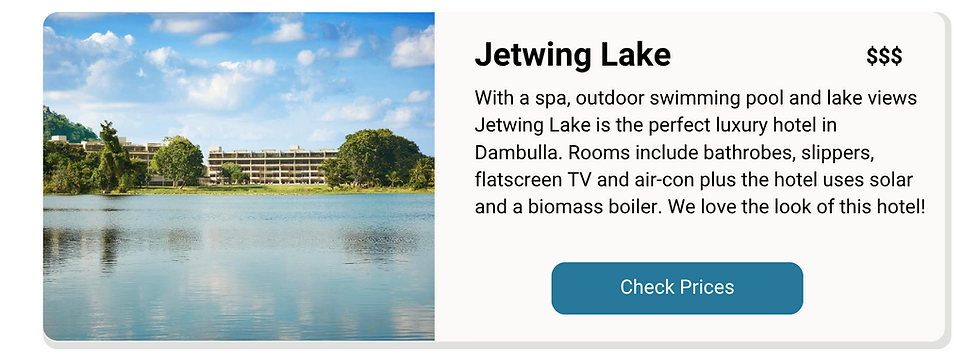






.png)

Comments